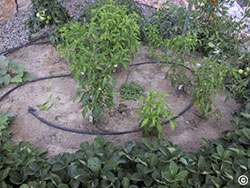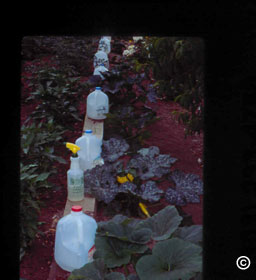During summer, irrigation is the key factor if you want to grow quality vegetables. A few examples illustrate this point.
What vegetable requires more watering than others?

Beans require more frequent irrigation than most other vegetables for optimal production and in the blossom- and fruit-growth stages use the most water of any vegetable. Depending on temperature and wind, beans may use one-half inch or more of water per day.
What do under-hydrated beans look like?
Blossom drop and reduced bloom indicate that beans have been too dry at some time. Even with adequate soil moisture, hot winds can cause beans to drop their blossoms. Tadpole-shaped beans, that is beans that are fat at the top and skinny at the end, are another symptom of water stress.
What does water stressed corn look like?

Water stress on corn will delay silking but not tassel development. In such cases, pollen shed from the tassels may precede silking. The result is poor pollination. With a little water stress, the ear may not fill out fully. Some ears may not develop at all.
Why is it important to water vegetables correctly?
An even-moisture supply also enhances the flavor of leafy and root vegetables, as well as cole crops like broccoli, cabbage and cauliflower. Potatoes become knobby if they become too dry, and may decay in the ground if kept overly wet.
Even a short lapse in providing moisture greatly influences the quality of harvested vegetables. Avoid problems by watering vegetables consistently.
For “Water absorbing polymers” refer to message number 1611.
For “Watering Colorado soils” refer to message number 1621.
For more information, see the following Colorado State University Extension fact sheet(s).



